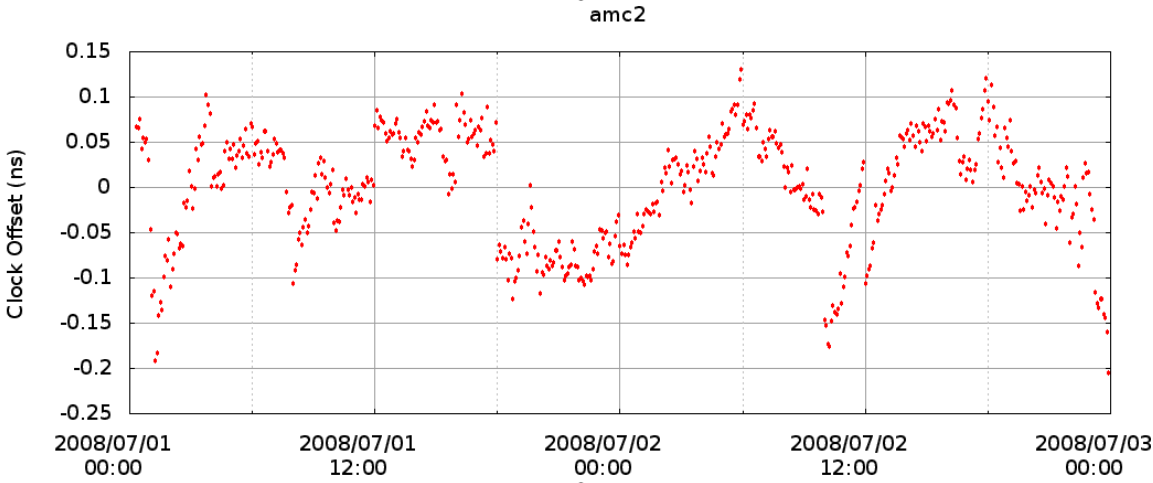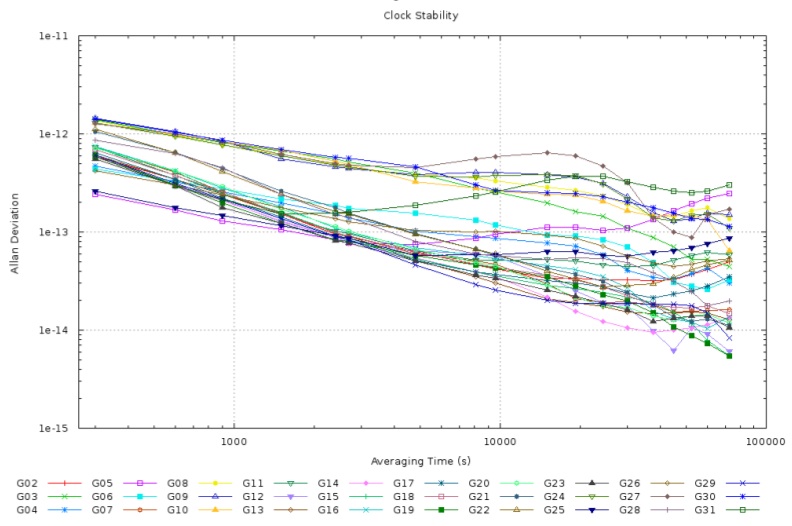Synchronizing clocks
October 13th, 2008 by Álvaro MozoAmong the products you get from magicGNSS Beta there are satellite and station clock estimations and predictions. By “satellite and station clocks” we mean the offset of these clock as seen by the ODTS with respect to the clock of the station selected as reference clock in the Settings tab, at every measurement epoch.
What synchronisation performances can we obtain with magicGNSS? The comparison of the satellite clock estimations with the IGS ones is typically within 0.15 ns RMS: this means that magicGNSS is a very powerful means of synchronising remote clocks, provided they are connected to a GNSS receiver!
In the ODTS Report we provide plots showing the estimated clocks, after the removal of a parabola. Why do we remove the quadratic trend?
The signal generated by atomic clocks, such as those available on GNSS satellites and on many IGS stations (like magicGNSS Core Stations), can be typically decomposed into a deterministic term, which is well represented using a parabola, and a stochastic term, which as of today can not be properly modelled and is therefore considered as a random noise and characterized accordingly through the Allan Deviation (ADEV), which is also given in the report.
The plots of the ODTS Report intend to show the stochastic part, which allows to visually evaluate the actual clock behaviour. The full offset of the clocks to the reference station is given in the RINEX clock files included in magicGNSS Beta’s output zip file.
Tags: Algorithms, Help, ODTS





